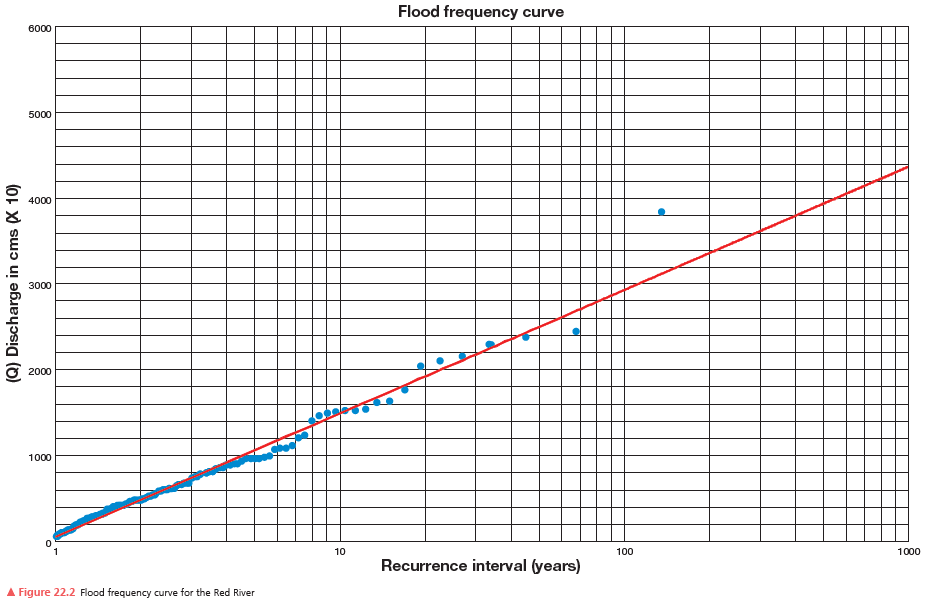Why is correlation needed to construct a complete geologic history of a region? How does correlation
work, e.g., in the Colorado Plateau region? What will be an ideal response?
No single location in a region has a geologic record of all events that occurred in its history;
correlation allows geologists to determine the complete geologic history of the region. The entire 2-
billion-year record of the Colorado Plateau is not preserved in a single location due to erosion. By
correlating the uppermost rocks at one location with the lowermost equivalent rocks of another area,
the entire geologic sequence can be put together
You might also like to view...
Using the flood frequency curve in Figure 22.2 (and colored pencils to mark on graph), estimate the recurrence interval of a flood of the following magnitudes:

200 cms: _____________
1500 cms: _____________
3000 cms: _____________
How come an animal's carbon-14 levels do not start to decrease until it dies?
A) because it constantly replenishes its carbon-14 supply by eating plants with carbon-14 in them B) because it constantly replenishes its carbon-14 supply by breathing air with carbon-14 in it C) because it is constantly being bombarded with cosmic rays D) carbon-14 only starts to decay after the animal dies E) The carbon-14 levels do not decrease because the carbon-13 in its skin protects it from cosmic rays.
The universe is 14 billion years old. If the universe is not expanding, how long will it be until a galaxy 17 billion light-years away is at the edge of our observable universe?
The residence time of water in the atmosphere is about:
A) 12 hours. B) 1 day. C) 10 days. D) 100 days.